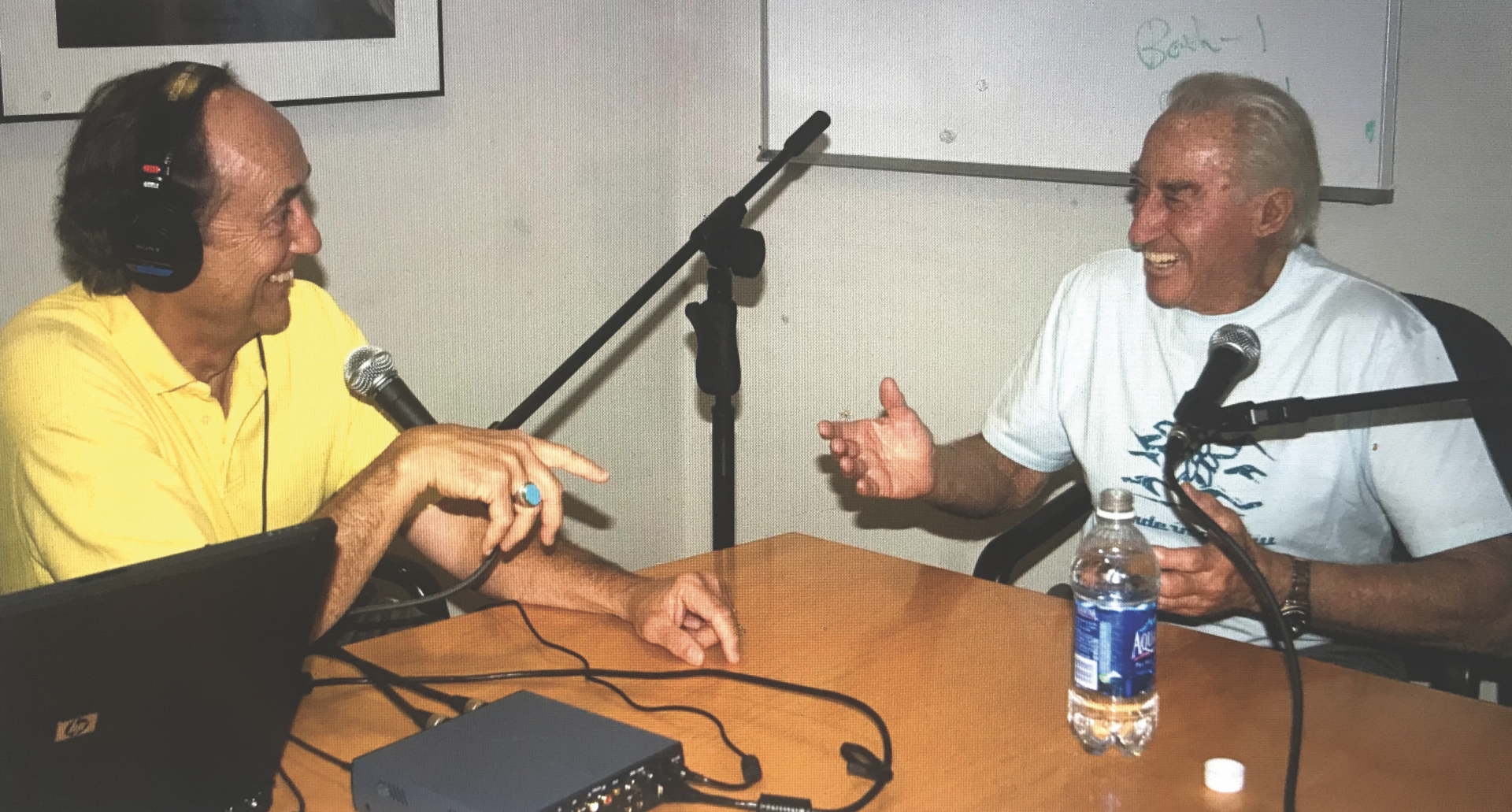“1971 in Vail was a time when almost nothing seemed impossible, and everything was new.”
Tara Flanagan sums up the spirit of Vail Public Library’s digital archives, called Vail Valley Voices, through that opening statement, which introduces longtime Vail Valley artist Debbie Bolon-Feeney. The artist’s voice recording is just one of nearly 80 the library currently offers freely to the public, whether you have a library card or not.
Vail Valley Voices aims to digitally archive, through photos and voice recordings, a comprehensive history of the Vail Valley, from its indigenous people to its evolution as a town and renowned resort destination.

Ella Burnett interview with Jo Norris.
“For me, a fun part of these interviews is finding that very unique piece of history that really stands out,” says Tony Mauro, who’s known as “the voice of Vail” and currently conducts the interviews.
He recalls a story from Dr. Jack Eck, one of Vail Health’s pioneers, who talked about going into a mine to help a miner who got stuck and was left behind in the dark cavity with no lights, because all the other “superstitious” miners ran out.
The digitized stories run the gamut, from multiple people talking about the Vail Trail to the Vail Rotary Club and Summervail Art Workshop. They also include controversy over projects like building the first roundabout or how wildlife and the jobs of wildlife officers have changed over the years. Of course, it includes plenty of stories from the early days of Vail Mountain and Vail Village, from Ann and Pepi Langegger surviving World War II and migrating to the U.S., to naming Widge’s Ridge after Alice “Widge” Ferguson, to Pete Seibert Jr.’s adventures on the mountain as a kid and his founding father’s contribution to skiing and role in the 10th Mountain Division.
Funded by Friends of Vail Public Library, Vail Valley Voices is presented by the Vail Public Library as part of the town’s Cultural Heritage Preservation & Programs mission, which strives to preserve, enrich and sustain the cultural and historic legacy of Vail. The program formed in 2019 after Vail applied for certification as a Sustainable Destination by the Global Sustainable Tourism Network in 2017. The town received approval on nearly every criterion but didn’t have a system to protect and honor its cultural heritage, which is one criteria of certification. While the town did get conditionally certified as a Sustainable Destination, the organization wanted to see how Vail was improving on this front. Now, 14 members meet bimonthly to expand Vail’s legacy, through initiatives like Vail Valley Voices, Art in Public Places, digitizing the Vail Trail (Vail’s first newspaper) and the Colorado Snowsports Museum. As a result of the preservation work (and all of Vail’s green initiatives), Vail became fully compliant, and certified, as a Sustainable Destination in 2020.
“Capturing history is absolutely priceless,” says Lori Barnes, director of library services at Vail Public Library. “It’s a labor of love. There’s a lot of effort that goes into preserving local history; it’s just so important.”

Walter Gallacher interviewing Klaus Oberbayer, founder of Sport Obermeyer, Ltd.
Though Vail Valley Voices falls under the umbrella of the Cultural Heritage Preservation & Programs, the effort began about eight years ago, when the Marmot Library Network gathered librarians who were interested in digitizing archives. Jo Norris was one of the first to get involved at Vail Public Library. Vail’s first digital archive of Dick and Mary Pownall came online in 2016.